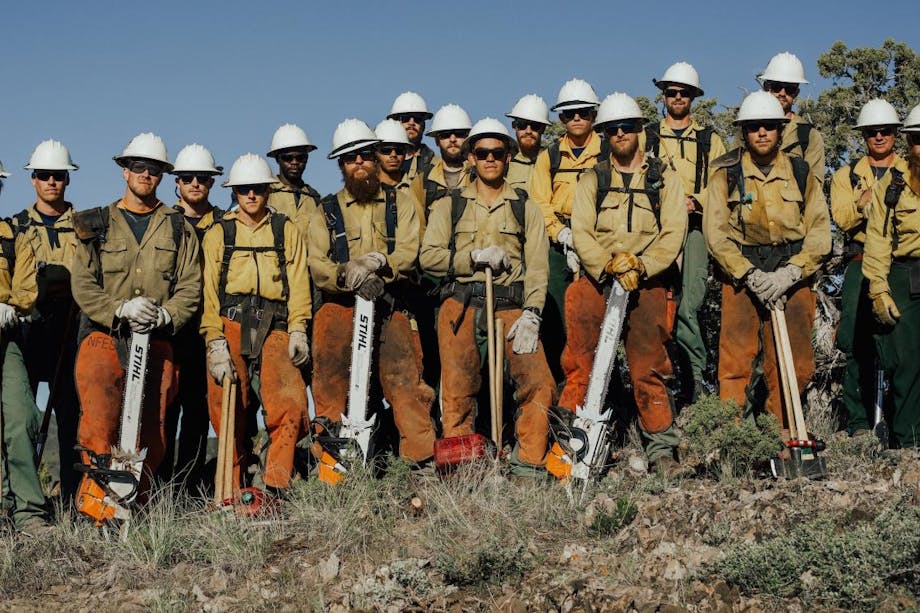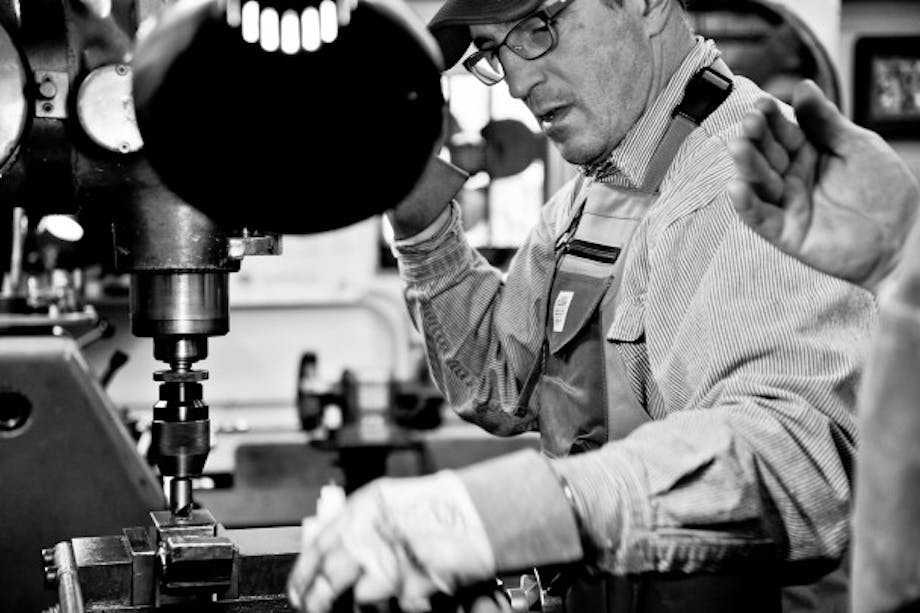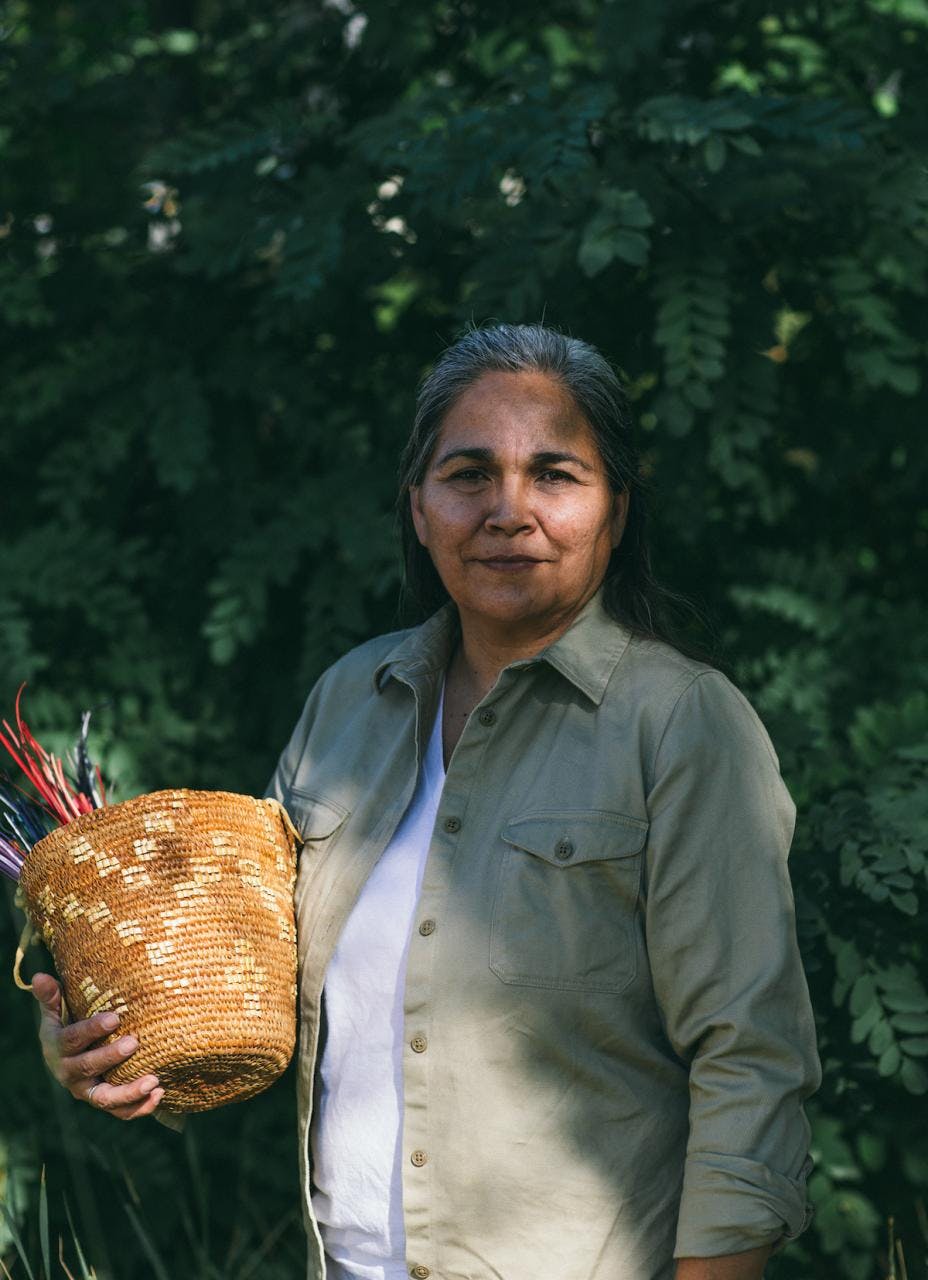
Using the ancient methods created by the Okanogan-Wenatchi bands of the Colville Tribe, Bernadine Phillips handcrafts coiled cedar root, bear grass and wild cherry bark baskets. She has always had deft hands, beginning with years of traditional beadwork before learning coil weave basketry from her family. She searches the mountains for her materials, then prepares baskets over several weeks or months for use in berry picking. We had a moment to catch up with Bernadine near her home in Omak, Washington, and learn more about this inspiring art form.
How long have you been working with basket weaving and other traditional crafting methods?
I learned to make the coiled cedar root baskets about 22 years ago, from my relative, Elaine Timentwa Emerson. Before that I learned how to do beadwork, sew, and embroider along with my sisters when we were really young, with my great aunt, and later from my mom.
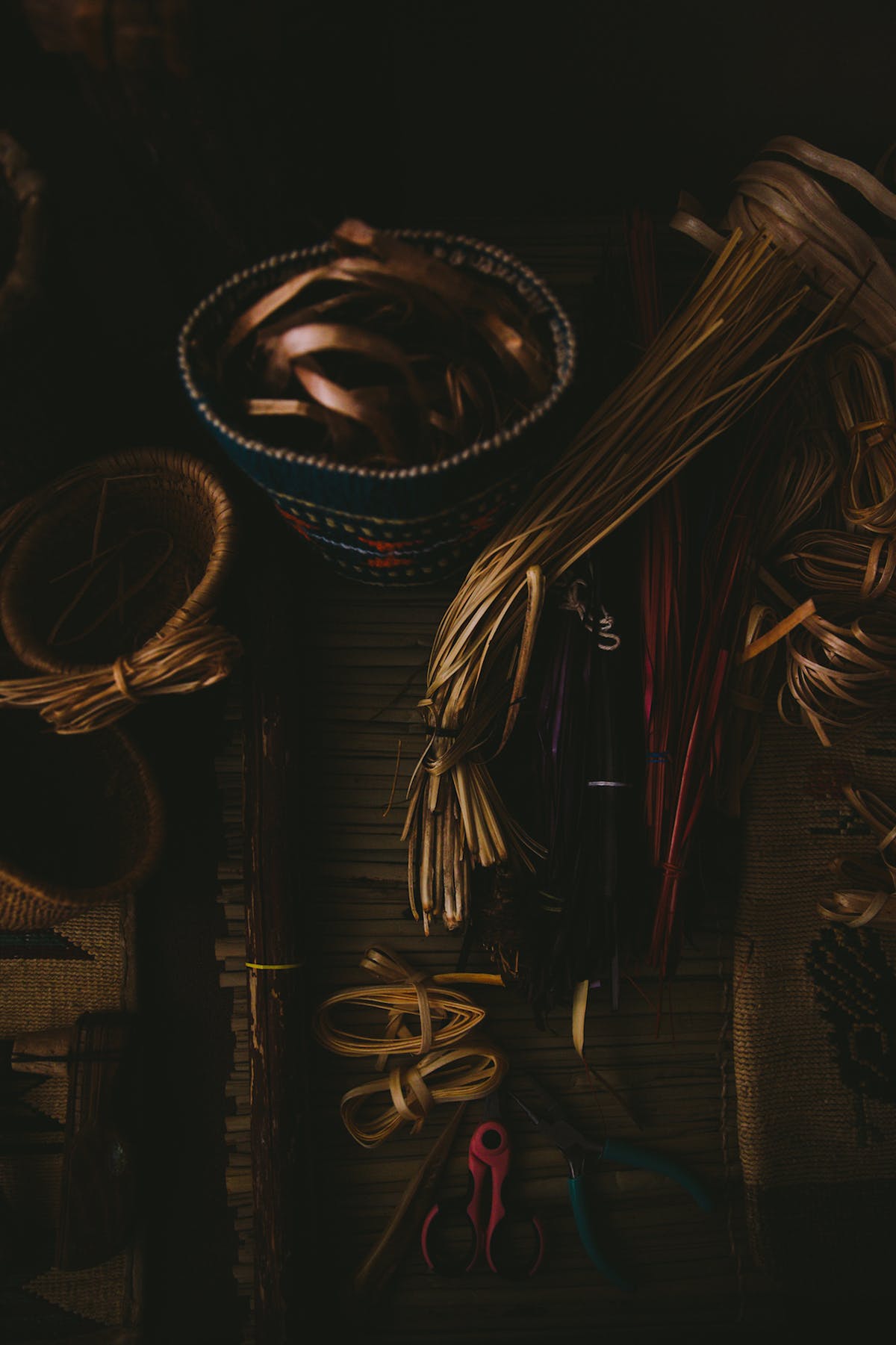
How was your interest in basket weaving formed and shaped? Were there any particular people or places that were involved?
I grew up using the coiled cedar root baskets when we would go picking huckleberries every year. I didn’t ever think about learning to make baskets until after the birth of my daughter Bridgit. It was then that I wanted to pass on the knowledge and skills of the women in our family by learning how to make the baskets. When the opportunity to take the class was available, I drove from Republic to Omak every Saturday during the Fall and Winter in 1992. The next Spring we learned how to go out to gather the cedar roots.

Everyone knows each other in our communities, and Elaine had known me my whole life. This was the first time that my mom was learning right along with my sister and I. Until then, my mom was the one to teach us how to bead, sew, cook, ride horses.
We go just about anywhere within a days driving distance to gather the basketry materials, during the spring and fall. You really only want to gather what you will use during the year until you can gather again. It’s hard to know how much sometimes but you really want to do it in a good way, a way that won’t harm the trees or other materials. A lot of the natural materials are commercially gathered, and the people that do this either don’t know or don’t care that they are hurting the trees and plants. Too many times the plants or trees won’t recover. It is hard to see when this happens. We teach those who gather with us to not get to overzealous, take just some, but not all from one tree, or one area. In a few years we should be able to go back to that same place.
What’s the process of making a basket?
There are several steps to making a basket. First, you have to go out to the mountains to gather the cedar roots, beargrass and wild cherry bark during certain times of the year. Then all of the materials have to be prepared. Finally, you are ready to actually work on the basket. The materials are used while wet to make the baskets, this is when they are most pliable. Every part of the cedar root can be used: the inner part is used for the coil, outer part of roots are used for sewing the stitches, and the bark on the root can be used for the imbrication (design on basket).
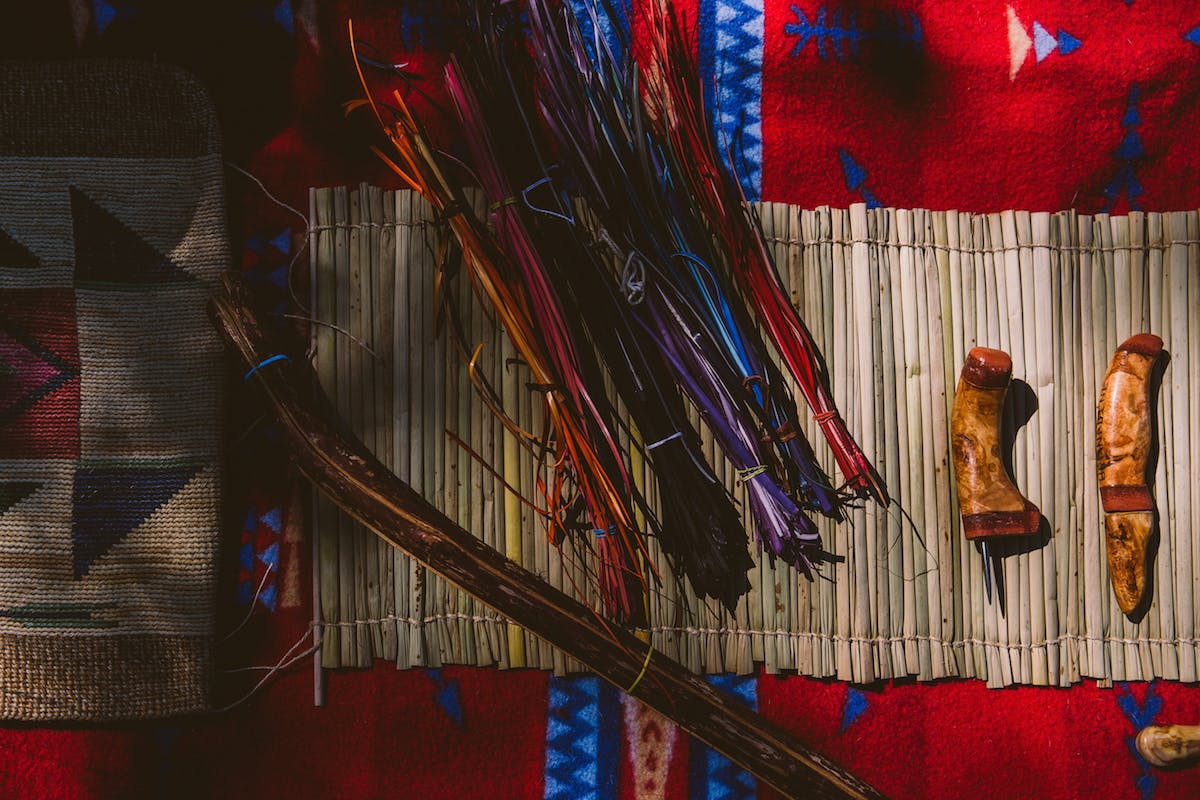
How long does it take you to create a basket from scratch?
Depending on the skills of the basketweaver and the size of the basket, it can take from two weeks to two months to make a berry picking basket, working 4-6 hours a day. This does not include the time to gather and prepare the basket materials.

What materials are involved and how are they sourced? And what types of tools are used to create the baskets?
Western red cedar roots, bear grass, and wild cherry bark are used on the baskets.
I use an awl, knife, scissors and mini needle nose plyers when working on a basket. A good awl and knife are really the only tools needed though.
When I gather the materials, I will use tools such as loppers, pruning scissors, a traditional root digging stick, and a knife.
You really have to like being out in the elements. You’re just simply going to get muddy. I never could use gloves, I like to feel the actual materials with my bare hands.
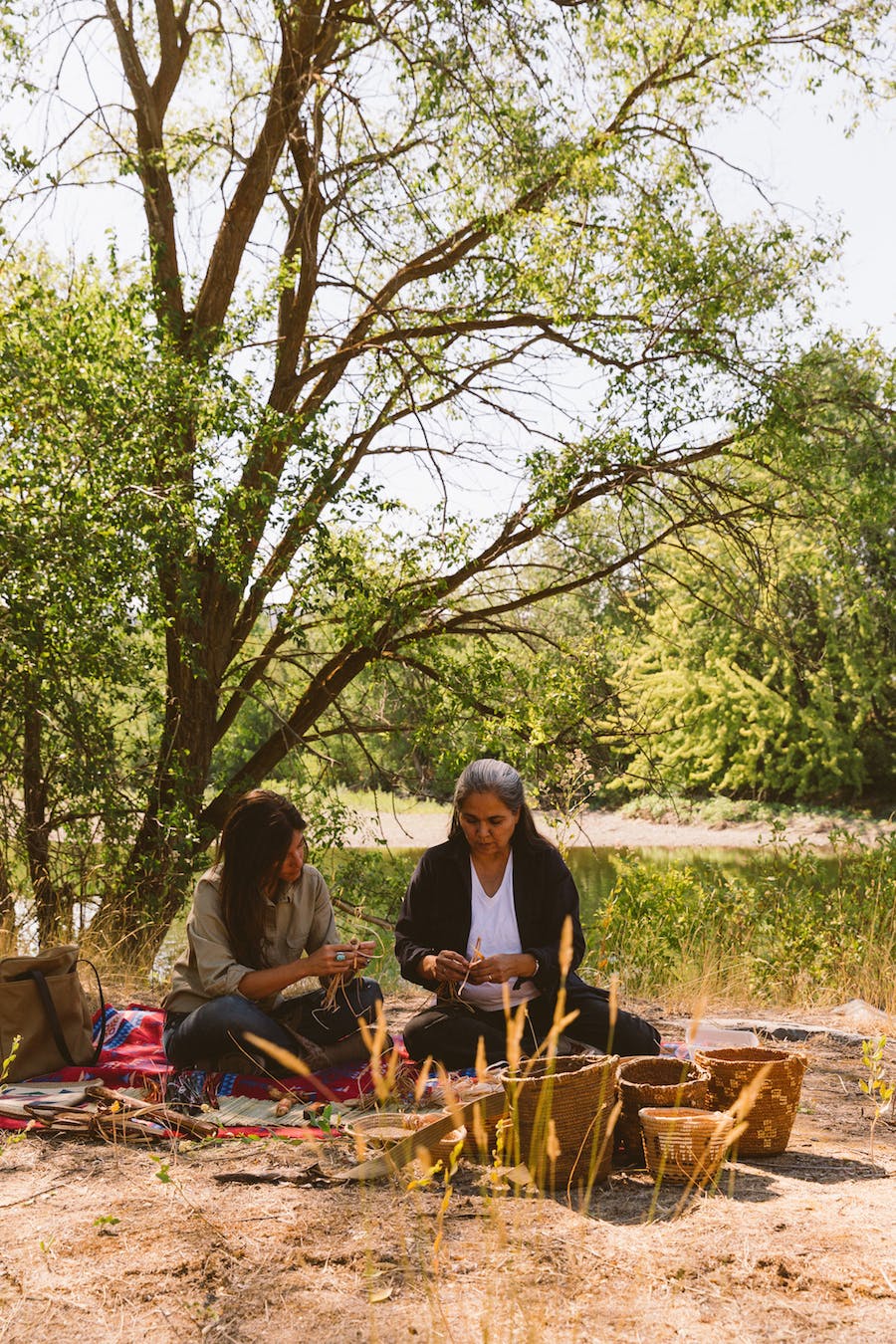
If you weren’t working with basketweaving, where would we find you?
I work from home, but ideally I would like to take more time to gather materials for the baskets, picking huckleberries, and other traditional edible foods.
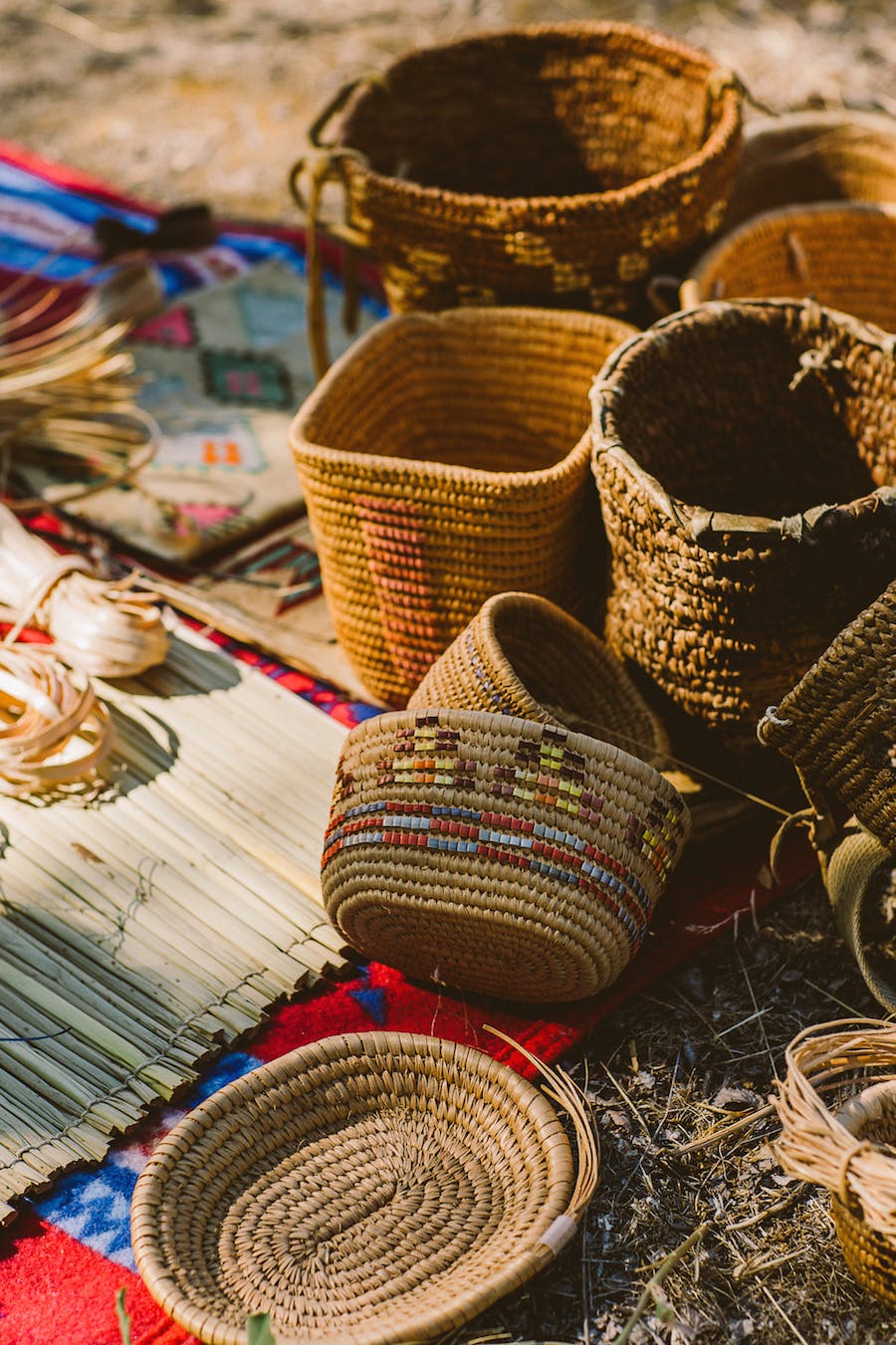
Whats your favorite piece of advise you’ve received?
My teacher told us, “You just have to keep at it. Making one basket does not make you a basketmaker.”
Later, when other family and friends took a class I noticed that she showed them some other things, when I asked, she just shrugged her shoulders and said she knew I would figure it out!
I looked at every coiled cedar root basket I could, to see how they were made, how the stitches looked, and really set my goal to be able to make a basket that looked as good as those that my great aunt and great grandmother made. I was determined to be good at it.
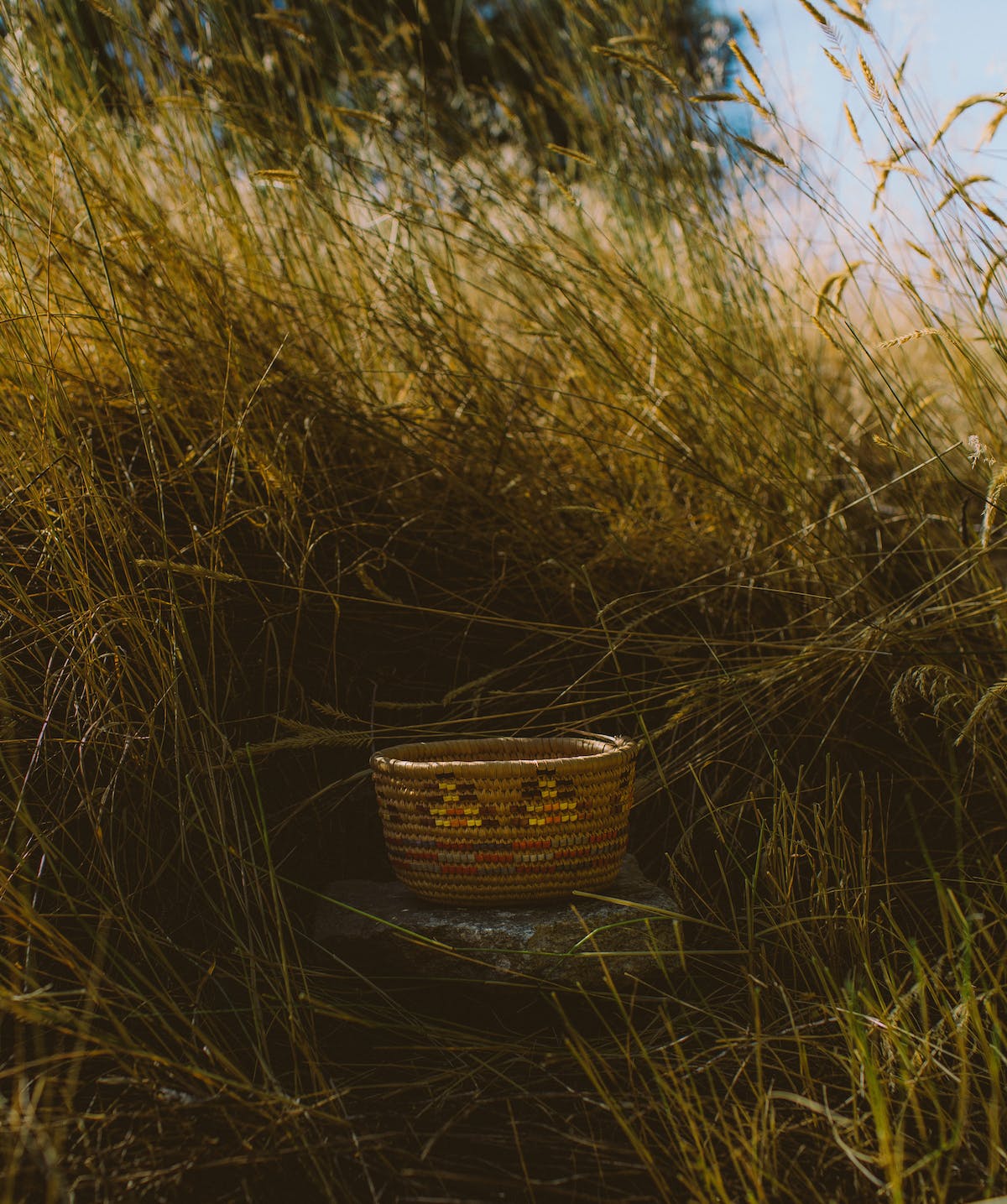
How can people take lessons from you?
Maybe a couple times a year, my sister and I will teach at different Native American Basketry Gatherings. It’s hard work getting things ready, and then actually teaching can be challenging as well.
Occasionally, I will participate in a basketry exhibit, but I don’t really make the baskets to sell. I get attached to the baskets while I am making them, and its hard to let them go.
When you work on your basket, you really set aside the other things in your life. It shows in your work, the stitches are even, and you aren’t fighting with the materials. It becomes relaxing, soothing, and healing.

